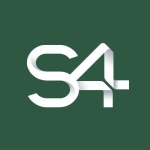What is our primary use case?
I will be talking about some of the leading products from Automation Anywhere, which is their RPA Taskbot and IQ bot. Being a consultant and partner, we have implemented successfully some solutions for Automation Anywhere using IQ bot and Taskbot.
How has it helped my organization?
We have found that finance as a function has always been a very strong use case when it comes to a product like Automation Anywhere. The reason is very strong compliance, quality, error controls, and the speed and efficiency with which Automation Anywhere can deliver projects. Because of this, finance as a function has always been a great user for this type of solution. However, we have also tried implementing Automation Anywhere around some very different use cases in HR.
We have implemented Automation Anywhere solutions for HR recruitment and onboarding, which has helped save a lot of time to go through some of the very detailed resumes with multiple pages of a candidates' profiles, their skill sets, their academics, and their years of experience. When there are hundreds and thousands of such resumes which are applied online through multiple channels, like LinkedIn, Monster, email, or any campaigns, it really becomes very painful for HR organizations to go and scan so many CVs and process, then mine, the best candidates for a particular job request.
So, we use successfully Automation Anywhere product to automate the complete recruitment process, along with our onboarding process as well. It has really worked wonders for the organization and departments.
Finance as a function is driven by cost and the money involved in it. So, if I'm processing an invoice, doing procurement, or expense processing, there is money involved. From a compliance perspective, the value of the bot should be accurate to the second or third decimal. The accuracy of the job being done has a very high sensitivity in finance compared to other functions because there is money involved on the receivable side or payable side. So, either I am to collect money from my customers or I am to pay money to my suppliers or vendors. Everywhere, there is money involved, and you can't execute an incorrect job. You can't execute a wrong document and end up paying less or end up paying more to your suppliers or customers. When it comes to financials, Automation Anywhere has done amazing work in ensuring not only the speed and accuracy of the bot, but also the compliance and error controls through which the bot executes the job at very high satisfaction and tolerance levels. So, I have seen various use cases and success stories where Automation Anywhere is used in finance.
What is most valuable?
So far, we have seen that a valuable feature of Automation Anywhere is the ease of integrating it with multiple systems. It can very easily integrate with an environment of an organization. It helps in a quick go to access and implementation. You don't have to spend days implementing Automation Anywhere software. You can quickly go drag and drop and do an ease of configuration. You can actually get your bot up and running very fast, which is one important advantage.
For a business user, it is not very technical or complex software. Before this, they need to have a lot of training. So, that is the ease and simplicity with which Automation Anywhere can be deployed, not only by a technical team, but also by the business owners. I found this to be a very unique, competitive advantage.
What needs improvement?
The industry is moving towards strong AI and ML-based algorithms. They have already started their journey. Earlier, Automation Anywhere added Taskbot, then they added IQ Bot. I would say bring the AI component into the Automation Anywhere product line, then a user will be able to make a lot of decision-making processes digitally instead of with human intervention. The more that they bring and make their cognitive engine stronger, along with the Taskbot or digital worker, that's where I feel they will have a wonderful contribution to an organization who is looking at a truly digital workforce environment.
They should do more on the cognitive side. If they can keep adding more features, that would be their greatest advantage.
What do I think about the stability of the solution?
A good thing about Automation Anywhere are three important things: scalability, durability, and the entire stability of the environment. So, I can start the journey with one, two, five, or 10 bots, then just look at the very comparable enterprise organization where I could apply hundreds of the bots.
Now, in any other situation, when I deploy the bot from our development to UAT to a production environment, and bots are running in a production environment, what I should not be worried about is: Are those bots running? Are the tasks getting completed on time? All that stuff.
Stability of Automation Anywhere bots is very high. So, a one side deploys these bots successfully. I don't have to worry much whether the bot is stable. Is the bot performing? Even after deploying the bot, do I have to go back and check ii the bot is having some problems? Or, are there some errors being induced?
In the Control Room, I am able to see the complete dashboard of all the bots:
- Which bots I have deployed (hundreds of them)?
- How many bots are in progress?
- How many bots are running?
- How many bots have thrown some error because of incorrect jobs or processes?
That gives me very quick access to the entire deployment of my bots. I can access that dashboard, even from my mobile. Even if I'm not in office and I'm head of the enterprise or a COE architecture, I can just log into my mobile and see how many bots are performing well, how many bots have done the job in time, etc.
The stability of the whole architecture is the essence of Automation Anywhere, if you ask me.
What do I think about the scalability of the solution?
Scalability is huge. I have seen organizations who don't want to invest big during the initial phase, even if they have a big appetite to deploy hundreds of bots. They normally start with five or 10 bots. The best part about Automation Anywhere is you can start with five, 10, 50, 100, 200, or 300 bots. Today, the Control Room can manage 300 to 400 Bot Runners in a single architecture.
So, organizations don't have to worry that after a 100 bots they won't have to do another architecture change or shift the entire environment here or there. They can keep on adding bots and keep scaling their organization to hundreds of bots.
You can configure bots to do multiple tasks in a series or in batch mode, depending upon the type of task. Ideally, when you assign a job to the bot, it will try to finish it. But, if there is some parallel processing required for some business requirement, I can make a few bots do the job parallel, then I can take over from where the other guys left off. That is another ease of Automation Anywhere. Bots can be configured the way you want to perform your operations.
How are customer service and technical support?
I have worked with their technical support. I would rate them quite well. It is improving day by day. From the initial days, when we used to approach the technical support, we definitely used to get a lot of technical insight from them related to Automation Anywhere. Today, when we talked to them for environments outside Automation Anywhere which are a customer environment, they are able to assist us. They are able to guide us on something, even as a part of the enterprise architecture.
The best part I have seen is the technical capabilities and support metrics to help the customers and partners (like us) are improving day by day. That is the biggest advantage of why they are able to reach this scale of enterprise penetration today.
How was the initial setup?
In this forum, we have come to know that they're also coming out with a browser version. Today, we have to install the software on a PC, desktop, or server. What they are coming out with now is like a browser version, which quickly can be applied instead of an installation. That is amazing. That will be disruptive. You can now deploy hundreds of bots at a very fast pace, and that's an amazing thing to look forward to.
Which other solutions did I evaluate?
We have seen environments where customers do have multiple product lines for doing different functionalities or process automations. While comparing various competitors, we have found that if a customer is at the SMB or medium scale of deployment, say two, five, or 10 bots, there are competitive products available . But, any organization who has gone enterprise scale of hundreds of bot has chosen Automation Anywhere because the way they have created their entire governments and architecture. Customers are more comfortable with Automation Anywhere when it comes to scalability.
Two or three bots, we have seen competitors here and there. But, the moment you move into large scale bot deployments, we have seen comfort more with Automation Anywhere compared to other competitors.
What other advice do I have?
Last year, I would have rate them an eight (out of 10). This year, I would rate them a nine (out of 10) because I'm seeing a lot of improvements coming. As an observer in the industry, a consultant, and a partner, this is what look upon to any giant like Automation Anywhere to bring a lot of exciting new features every year. This is required by everybody in the organization and globally. That's why I would say nine out of 10. I would have said 10 out of 10, but I want them to bring more such features, and maybe next year I'll be saying 10 out of 10.
Disclosure: PeerSpot contacted the reviewer to collect the review and to validate authenticity. The reviewer was referred by the vendor, but the review is not subject to editing or approval by the vendor. The reviewer's company has a business relationship with this vendor other than being a customer: Partner.


















